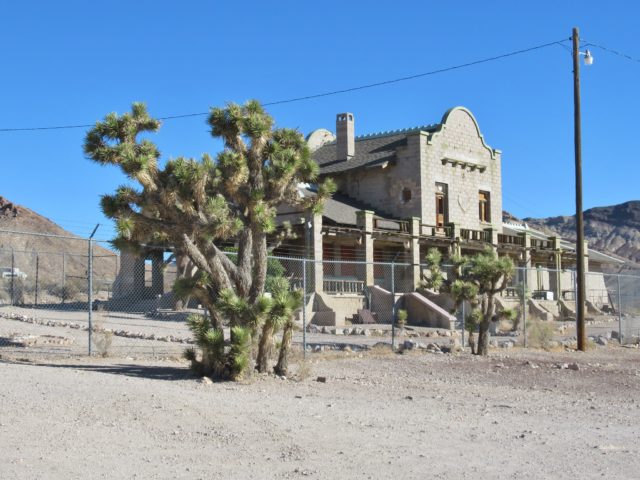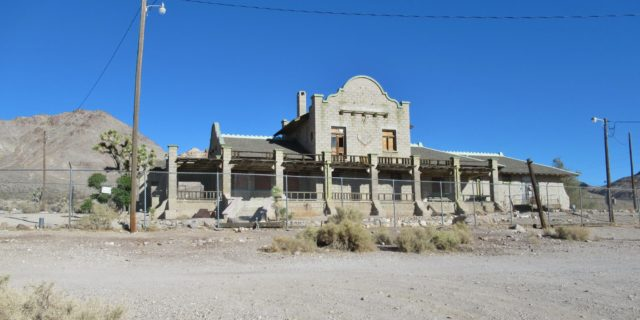Rhyolite is a ghost town located in the northern part of the Amargosa Desert in Nye County in the US state of Nevada. It is approximately 120 miles northwest of Las Vegas.
The city is named for a rock that can be found there – rhyolite. This igneous rock comes from the same family as granite, although it is much less common.
The story of this settlement begins in the summer of 1904 when mineral prospectors Frank Harris and Ernest Cross chose to conduct their next exploration in southwestern Nevada. On August 9 of the same year, they stumbled upon some high-grade ore on the south side of a nearby hill.
The two men analyzed ore samples from this hill. Assays of the rock samples indicated that the gold in the ore could be valued at $3,000 per ton (currently about $85,000).
The news of the discovery of ore quickly spread outside the area, leading to a surge in the number of people and prospectors who sought to live in this rich mountainous region. After news got around, several mining camps appeared in this region, one of which was Rhyolite.
Rhyolite’s population grew extremely rapidly. It started as a two-man camp but had 1,200 inhabitants two weeks later. Records suggest that in 1907-08, the population ranged from 3,500 to 5,000 people, although determining the exact number was very difficult, as this population was constantly changing.
Nevertheless, Rhyolite became the largest mining city in comparison to other camps from around that time. It was popular because it was located in a sheltered desert basin near to the Montgomery Shoshone Mine, which was the biggest mine in the area.
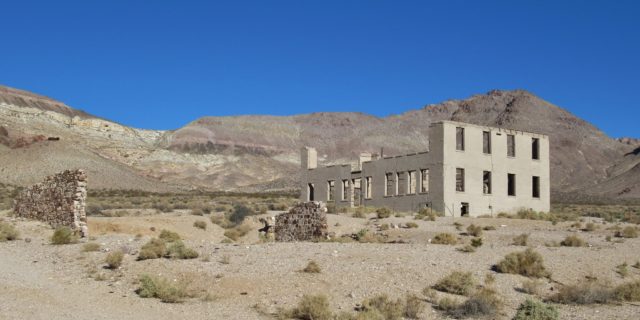
Harris and Cross named their mine “Bullfrog.” Harris is reported as saying that this is because the first stone the researchers discovered reminded them of the back of a bullfrog, as it was greenish in color and had large pieces of yellow metal on it.
The name spread to the surrounding area so that the hills became known as the Bullfrog Hills. The particular mountain where Harris and Cross found their first piece of ore became known as Bullfrog Mountain.
A combination of this mine and the nearby Montgomery Shoshone mine (which was located closer to the city of Rhyolite) prompted many people to move to this area for work.
The Montgomery Shoshone mine was named after its founder. It was very successful and it is estimated that ore with a value of $10,000 was mined daily at this location. In February 1905, ore from the Montgomery Shoshone mine was estimated to have a value of $16,000 per ton (about $455,000 in today’s money).
In 1906, the industrialist and steel tycoon Charles M. Schwab became interested in the swift success of this city and he decided to invest in this area. Consequently, he acquired the Montgomery Shoshone mine. Charles expanded the business by hiring more workers and excavating new tunnels.
Schwab made a lot of further investments in his mine which also benefitted the city. For example, he provided the mine with a water supply, electricity, and a railway, all of which also served Rhyolite. A year later, Schwab also built an ore processing mill where he processed approximately 300 tons of ore daily.
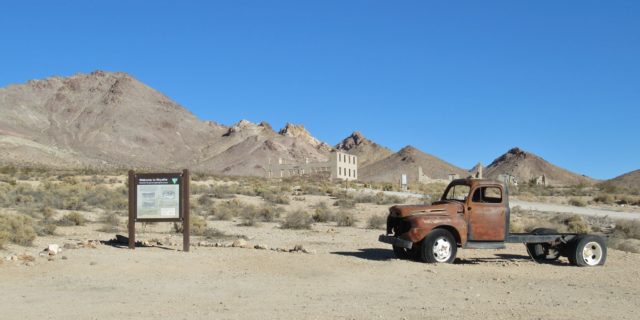
Thanks to Schwab’s contributions, by 1907, the city not only had electricity and running water but also a wealth of services including a hospital, a school, a post office, a public pool, two churches, a stock exchange, police and fire departments, restaurants, and even an opera house. The city boasted its own newspaper called the Rhyolite Herald.
The largest and most prominent building was a three-story bank, the construction of which was estimated to come in at $90,000 ($2,500,000 today). The bank was built in 1908. It had Italian marble stairs, imported stained-glass windows, and also incorporated a post office inside.
One of the most famous attractions in the city is undoubtedly the Bottle House, a quirky little building that is still standing today. A miner named Tom Kelly built the house entirely out of glass bottles in February 1906 using approximately 50,000 discarded bottles of beer and liquor.
Despite the many successful developments within the city, various financial issues began to plague the mines. There was the San Francisco earthquake which caused terrible disruption to the railway. The financial panic of 1907 (the Bankers’ Panic or Knickerbocker Crisis) also negatively affected the activities of Rhyolite.
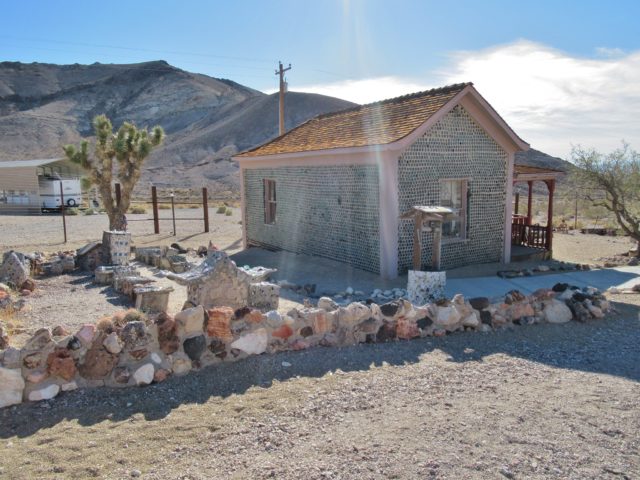
In 1908, a British mining engineer was instructed by investors to conduct a study of the Montgomery Shoshone mine. The results were distinctly unfavorable, causing stock prices to fall from $23 to $3. They later plummeted further to 75 cents.
By 1909, the area was beginning to run out of ore. The mines began to close while banks and businesses became bankrupt. The previously successful Montgomery Shoshone mine ran at a loss for 1910 and then was forced to close in 1911.
In 1910, there were about 600 inhabitants in the city of Rhyolite. As unemployment grew, many left for other cities. On March 4, 1911, the Montgomery Shoshone mine was closed and the company’s shares were completely dropped from exchanges after they fell to 4 cents.
Gradually, everything in the town closed down and everyone left. By 1916, electricity in the city had been cut off. The 1920 census reported a population of 14 people.
After the city became empty and abandoned, the buildings fell into decay and some of them collapsed. However, some of the buildings were dismantled to provide building materials for other cities and mining camps nearby.
The historic city of Rhyolite is now maintained by the Bureau of Land Management and has become one of the most photographed ghost towns in the West.
In the 1930s, many visitors came to the city due to its proximity to the Death Valley National Park. For this reason, several souvenir shops opened there, as did a gas station.
Currently, the city consists of ruins, which have become popular among film crews. In 1925, the Bottle House was renovated to shoot the silent film The Air Mail. The three-story bank building was used in the 1964 movie The Reward. In 2004, the movie The Island was filmed here. Other movies such as Cherry 2000 and Six-String Samurai were also filmed in Rhyolite.
There are also open-air art installations for visitors to appreciate, such as “The Last Supper,” a sculpture created by the Belgian artist Albert Szukalski in 1984. In 2000, after he passed away, the Goldwell Open Air Museum was created near Rhyolite to help advertise and preserve the installations of Szukalski and other artists in that area.
All the photos in this article were taken by John Schrantz – Jasperdo. Many thanks to him for giving us permission to use his photos of this stunning abandoned ghost town in Nevada.
He has got a huge collection of his photos on Flickr which you should definitely check via this link.
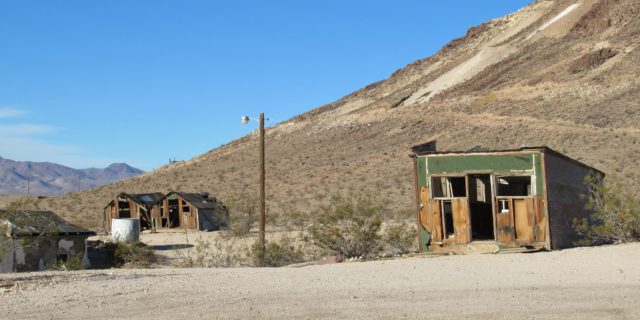
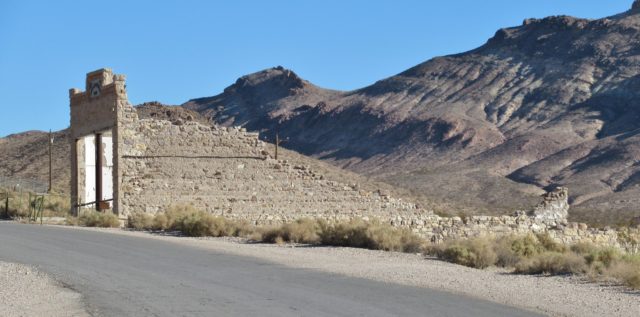
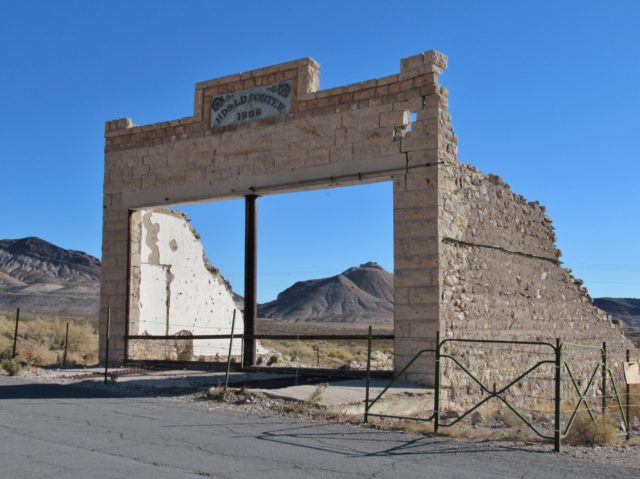
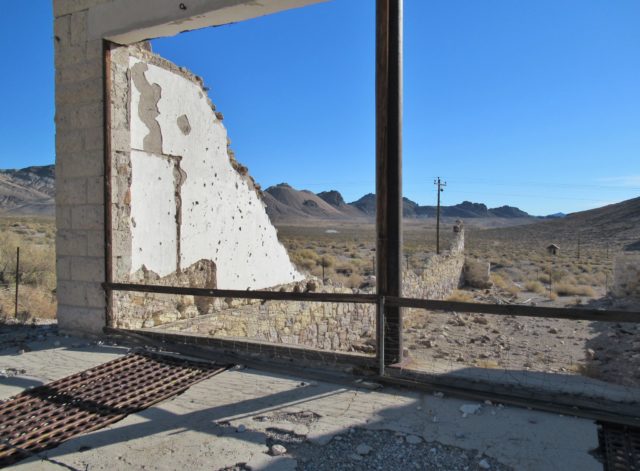
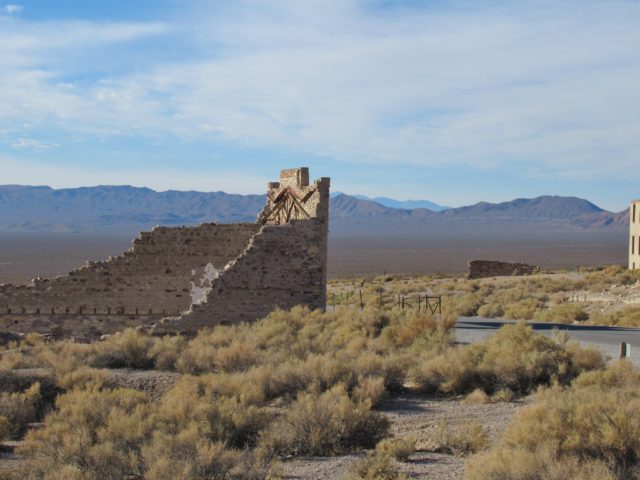
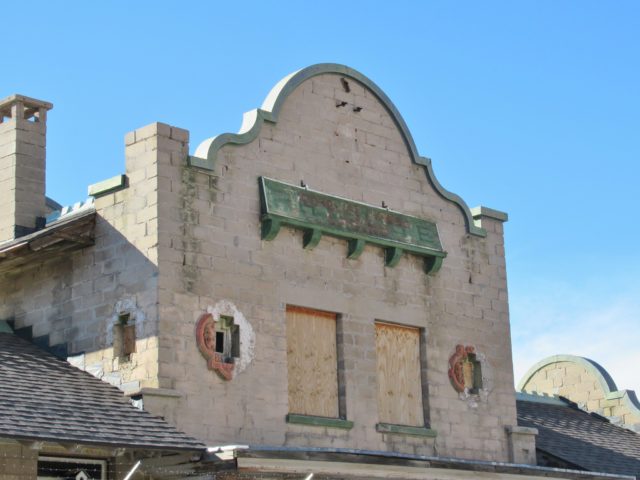
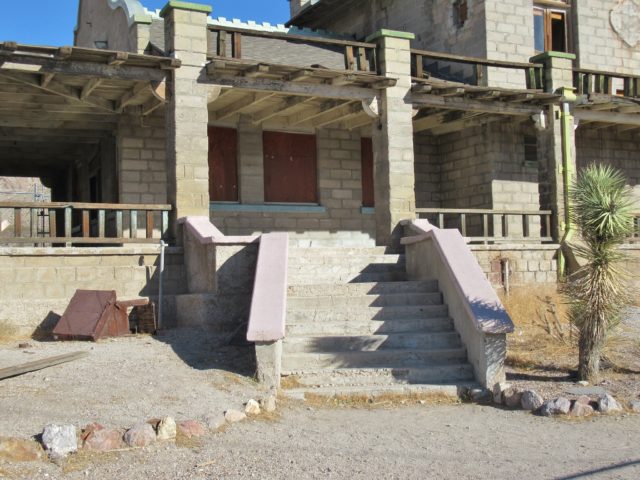
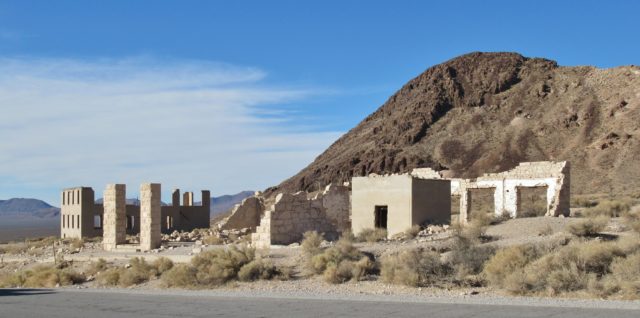
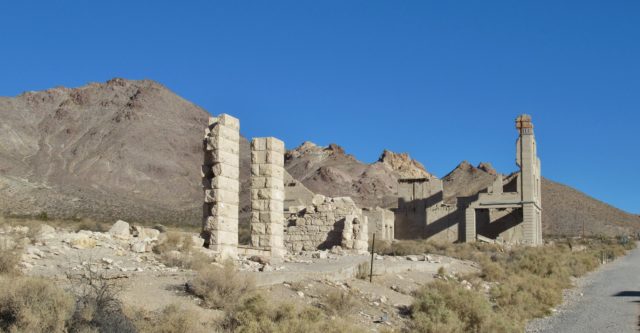
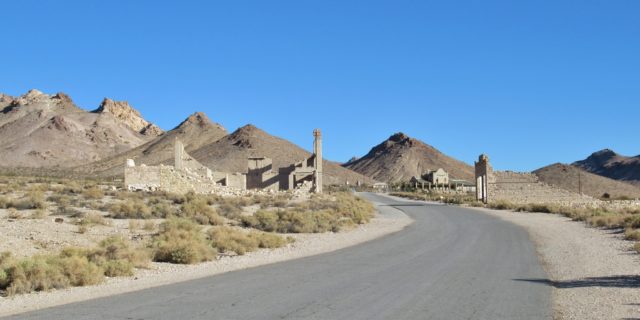
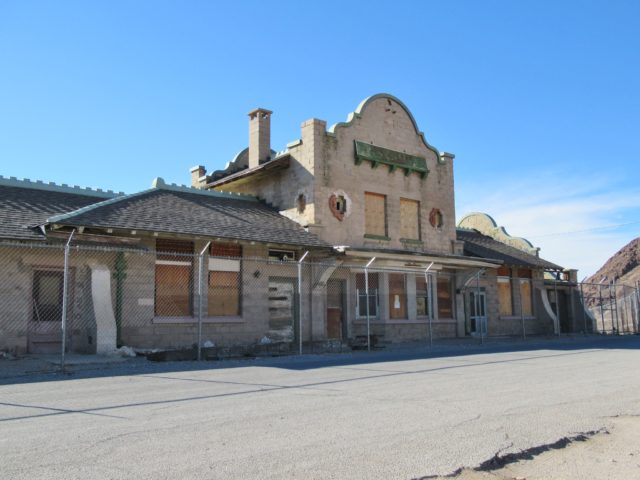
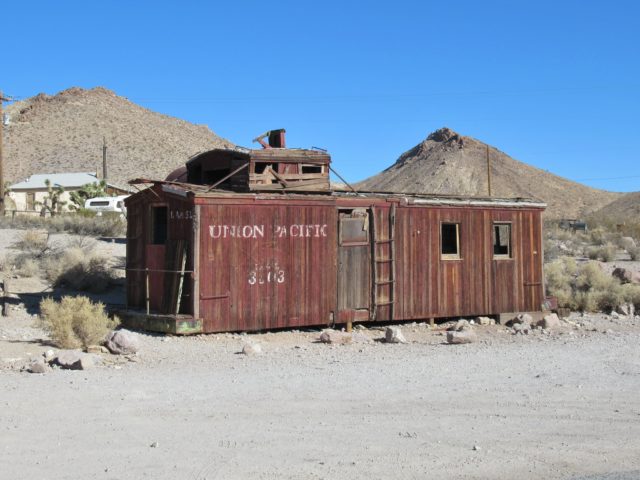
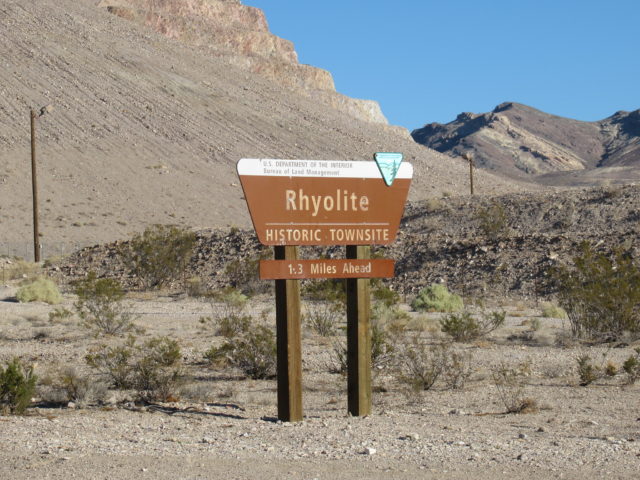
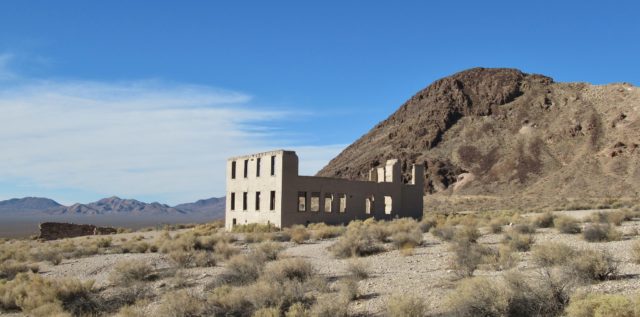
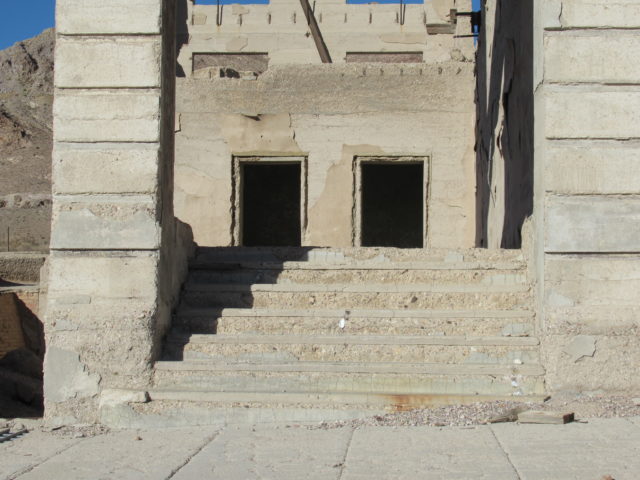
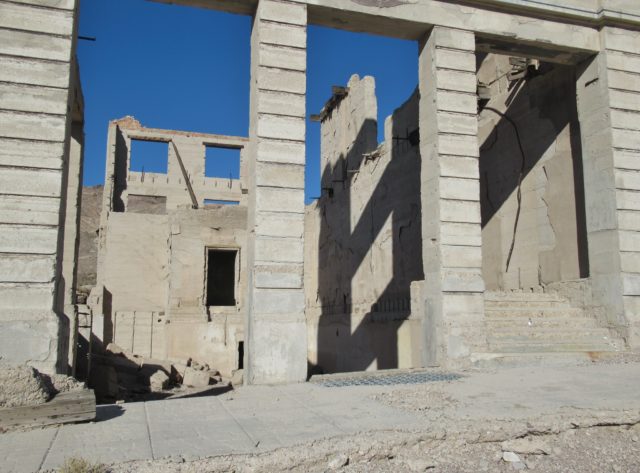
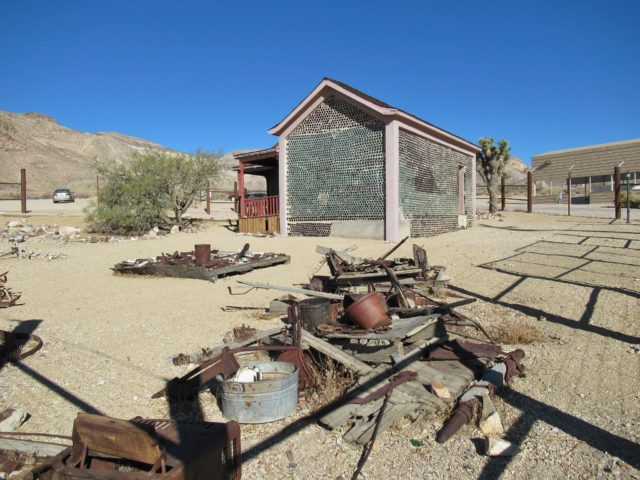
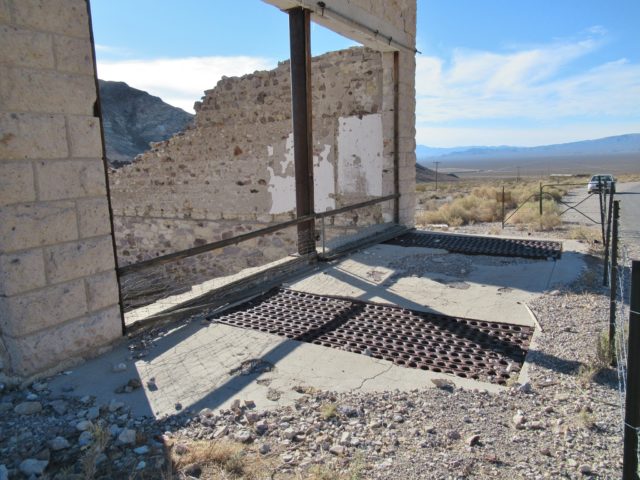
The Ghost Town Farina & It’s Cemetery
